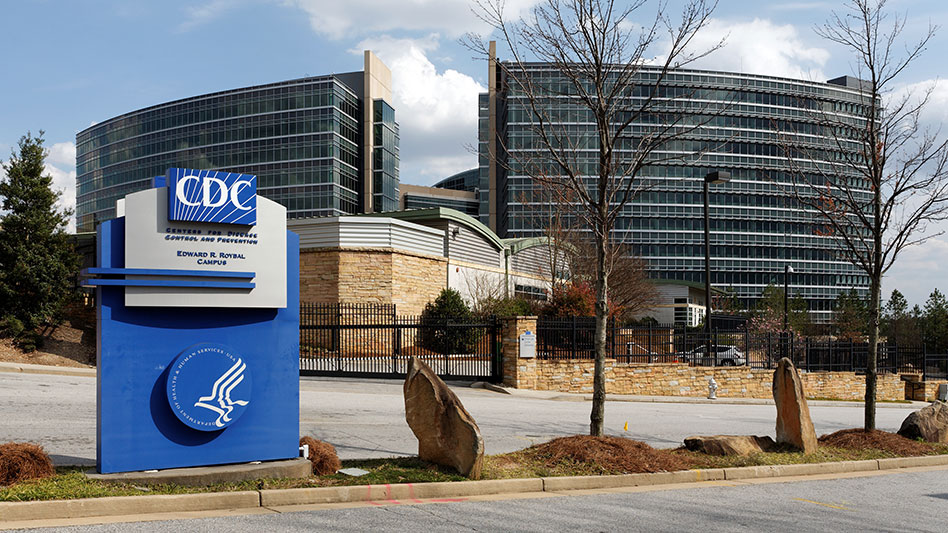Federal Health Agencies Publish Report Detailing 1st Death Attributed to Occupational Asthma in Cannabis Production
Marijuana Industry News November 18, 2023 MJ Shareholders

Nearly two years after the death of a 27-year-old woman working in a cannabis production facility in Massachusetts, the U.S. Department of Health and Human Services and the Centers for Disease Control and Prevention have released a report detailing the findings of an Occupational Safety and Health Administration inspection.
The five-page report, dated Nov. 17, examines the widely reported incident on Jan. 4, 2022—and the events leading up to an employee’s fatal asthma attack—described as the “first death attributed to occupational asthma in a U.S. cannabis production worker.”
Though the employee and company name are not disclosed in the publication, it provides a timeline of what happened before Lorna McMurrey, who worked as a flower production technician at Trulieve’s now closed Holyoke cannabis cultivation and production facility, stopped breathing and lost consciousness. She went into cardiopulmonary arrest before emergency responders arrived, and staff attempted CPR. After being admitted to the intensive care unit, she later died Jan. 7.
“This case illustrates missed opportunities for prevention, including control of workplace exposures, medical surveillance, and treatment according to current asthma guidelines,” the report, published in the CDC’s “Morbidity and Mortality Weekly Report,” indicated.
RELATED: Investigation Began Before Trulieve’s Holyoke Facility Worker Died
When the employee was hired in May 2021, she worked throughout the facility in multiple roles, according to the report. In July of 2021, she had what her employer believed to be COVID-19 symptoms, including a cough. Her employer required her to get tested for COVID, and the two tests both had negative results, according to inspection findings. The employee’s mother reported that she had no previous history of allergies or asthma, and after working in the production facility, began to experience shortness of breath, cough and other symptoms. The Massachusetts Department of Health, which was involved in the inspection, later discovered that the employee was evaluated in 2016 for a chronic cough, though she was not diagnosed with asthma at the time.
The report indicated she worked as a cycle counter for the first several months, counting packaged cannabis products throughout the facility, but moved into a flower technician role in October 2021, where her primary responsibility was grinding cannabis flower three times a day and making prerolls.
“These activities resulted in increased dust exposure. Dust from the grinder was collected by a shop vacuum; however, the vacuum had no high-efficiency particulate air (HEPA) filter, and visible dust escaped,” the federal report noted. “Other flower production coworkers reported that the employee’s cough increased, particularly when the grinder was on.”
The employee took some precautions, including wearing an N-95 mask, gloves and long sleeves and moving her workstation outside of the grinder room, according to the report.
On Nov. 9, 2021, emergency responders were called after she experienced shortness of breath, according to the report. They transported her from the facility to the emergency room for treatment. She received a round of medication, including steroids and an inhaler.
Less than two months later, on Jan. 4, she told a coworker she was having shortness of breath that had started two weeks before but seemed to be getting worse. Later, while filling prerolls, she began to cough again, and despite using the inhaler multiple times, she continued to have shortness of breath. She went into cardiopulmonary arrest before emergency responders arrived, according to the report.
After the incident, OSHA investigators conducted an inspection that included a worksite exposure assessment, interviews with flower production coworkers and family, and medical record reviews. They found that four of 10 coworkers with similar responsibilities also had respiratory tract or skin symptoms, but that particulate dust concentrations and other potential airborne hazards were under permissible limits.
In a related report published by the Massachusetts Department of Public Health’s Fatality Assessment and Control Evaluation (FACE) Program, investigators identified three “unrecognized hazards” that were key contributing factors in the incident: “failure to recognize ground cannabis as a potential occupational respiratory hazard; failure to adequately control the spread of airborne cannabis dust; and lack of comprehensive safety and health program and overall health training.”
The federal report’s authors determined that because the employee had not been previously diagnosed with asthma, her symptoms were consistent with occupational asthma, and that dust and microbial exposure within permissible limits could still be problematic. They also cited a study of seven other confirmed cases of work-related asthma in Washington state among cannabis production employees. Thirteen of the 31 employees who were part of the study had symptoms “suggestive of asthma.”
The report also speaks to the risks of cannabis cultivation production more broadly, listing “multiple respiratory hazards” including from microbial and plant allergens and pesticides.
The federal report noted that there are limitations to the inspection, including the fact that although the employee showed signs of fatal asthma triggered by a cannabis allergy, investigators could not include skin or blood tests to support this finding, they also could not assess airborne cannabis allergen levels, and they could not interview the employee directly.
The report provided some recommendations for cannabis industry and medical professionals moving forward, including evaluating employees for any signs of symptoms of asthma, “along with prompt diagnosis and medical management, which might include cessation of work and workers’ compensation when relation to work exposures is identified.”
The state’s FACE report also listed six recommendations with suggested process changes to protect workers:
Recommendation #1: Employers should assess and control hazardous materials in the workplace, including asthmagens.
Recommendation #2: Employers should ensure that all workers are properly trained about hazardous materials in the workplace.
Recommendation #3: Employers should develop and implement a comprehensive safety and health program that addresses hazard recognition, avoidance of unsafe conditions, and proper use of equipment.
Recommendation #4: Employers should implement a medical surveillance program to monitor the health of their workers.
Recommendation #5: Equipment manufacturers should adopt and implement the concept of Prevention through Design (PtD) to identify potential hazards associated with equipment and then eliminate these hazards through design changes.
Recommendation #6: Industry licensing agencies in Massachusetts should consider how they can further support the health and safety of cannabis industry workers.
The federal report noted that public health professionals “would benefit from additional research into prevalence and risk factors for cannabis-related occupational allergies,” and suggested potential steps to protect employees, including controlling and mitigating exposures, training and personal protective equipment.
“Prevention is best achieved through a multifaceted approach,” the authors wrote in a summary. “It is essential to evaluate workers with new-onset or worsening asthma for relation to work exposures and to recognize work in cannabis production as potentially causative.”
MJ Shareholders
MJShareholders.com is the largest dedicated financial network and leading corporate communications firm serving the legal cannabis industry. Our network aims to connect public marijuana companies with these focused cannabis audiences across the US and Canada that are critical for growth: Short and long term cannabis investors Active funding sources Mainstream media Business leaders Cannabis consumers








